Silloth on Solway GC is located in the centre of a rather grim town not long on charm. Hard on the port, one enters the house and upon making his way to the lounge is immediately confronted with a rather determined image of Cecil Leitch in the spot one would imagine was reserved for the queen in years past. The club can be rightly proud of its asscociation with the hard hitting Ms Leitch as she dominated ladies golf for a few years after WWI. Among her triumphs were four British, five French, two English and one Canadian championships. These numbers could likely be higher if not for WWI. Looking left of Cecil we see the putting green and first tee and an impressive sight it is, but not nearly so as is playing the course.
The first order of business to discuss is the rough. Anybody with experience of the M6 will know that Cumbria is nearly always shrouded in cloud and rain. So yes, the rough will be long and harsh. The heather will be robust and the stuff of dreams for London clubs. Balanced against this premium on accuracy off the tee is a plethora of great shots. From the down n' up fairway of #3, to the squared off and fallaway green of the 4th, to the in search of fairway on the fifth, to the drivable 10th and the extreme plateau green of the 13th; Silloth has it all there for the taking.
The first eases one into the game and rightly so. The wind of the day I think was fairly prevailing, quartering against from the left.
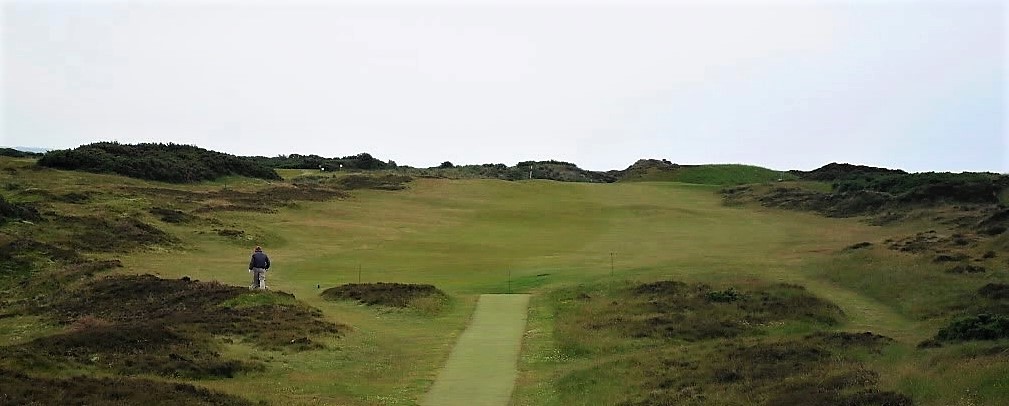
The obscured approach is to a rather small green; one of many at Silloth.
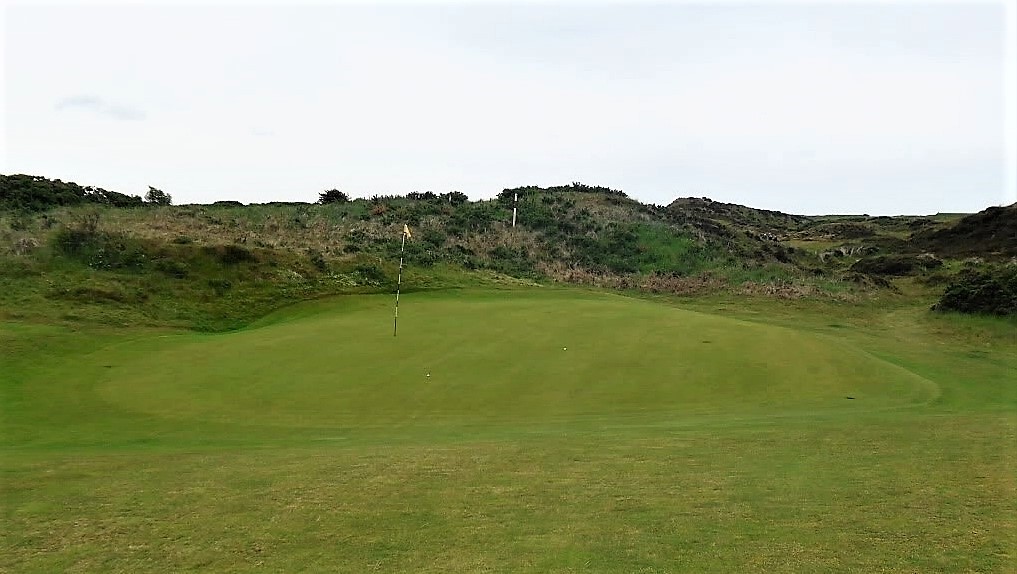
Another modest length two shotter, the second cuts to the right. Perhaps this is the one weakness of the par 4s in general, many are driver wedge to eight iron. That said, the green sites are often quite different and with punishing rough one doesn't need too many long testing wood shots.

The approach.

Climbing to a high tee we are now confronted with a blind shot lurching downhill and obviously left, but where left one can't tell. Cresting the hill one is confronted with the view below. The direct line to the green is cut-off by a bank of heather. One can either layup and leave a longer approach more on equal height with the green or go low and be left with a nasty little wedge. This is a terrific hole which at a moment says hello to the golfer. I believe Dr Mac moved the green to its current spot in 1914.
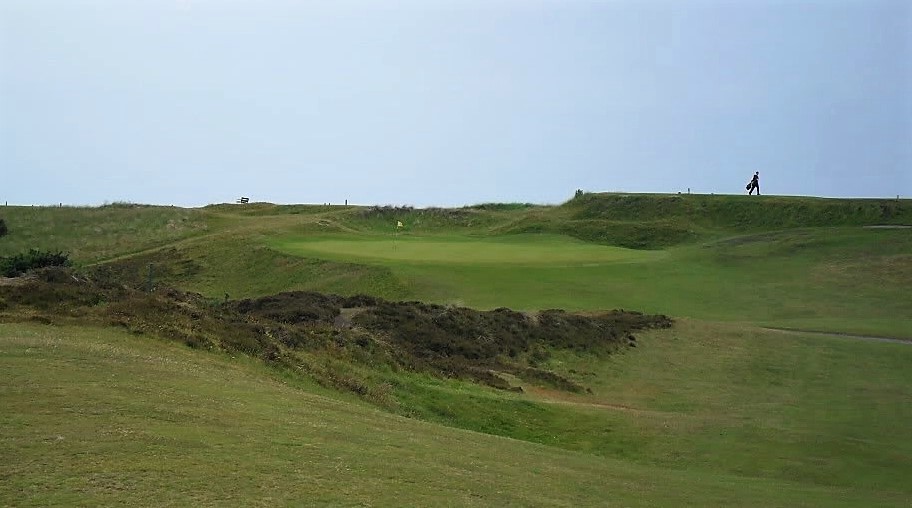

Looking back up the fairway.
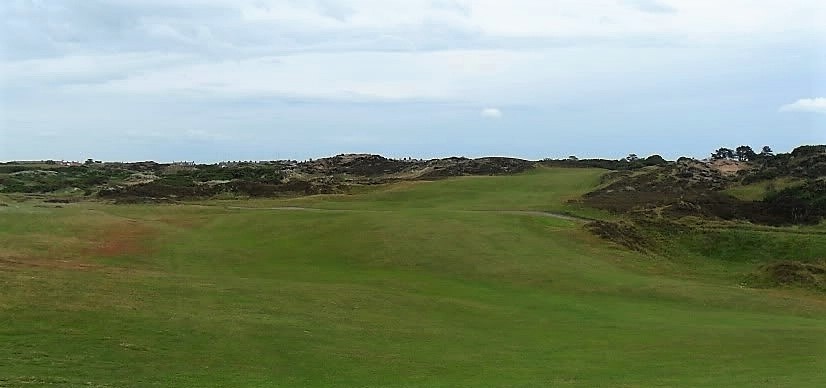
The 4th tee is above the third green and like the previous hole, features a blind drive to a rather narrow target. Below is the approach.
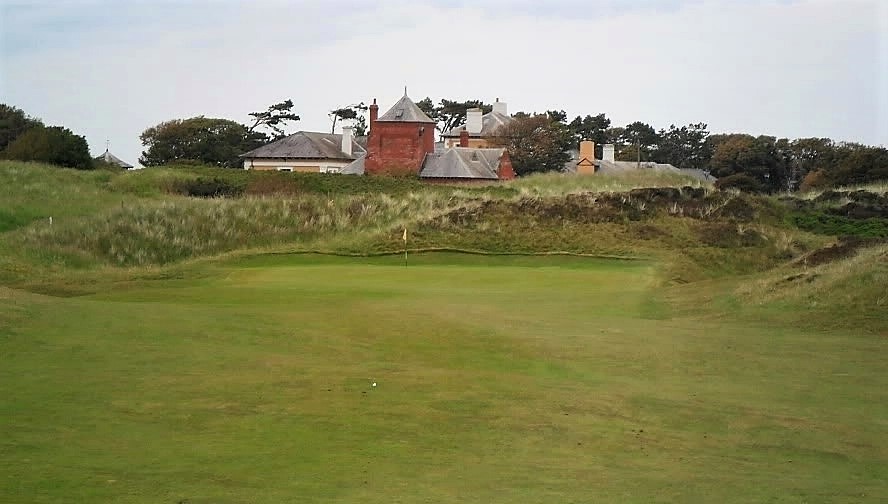
A look at the green from the 5th tee.
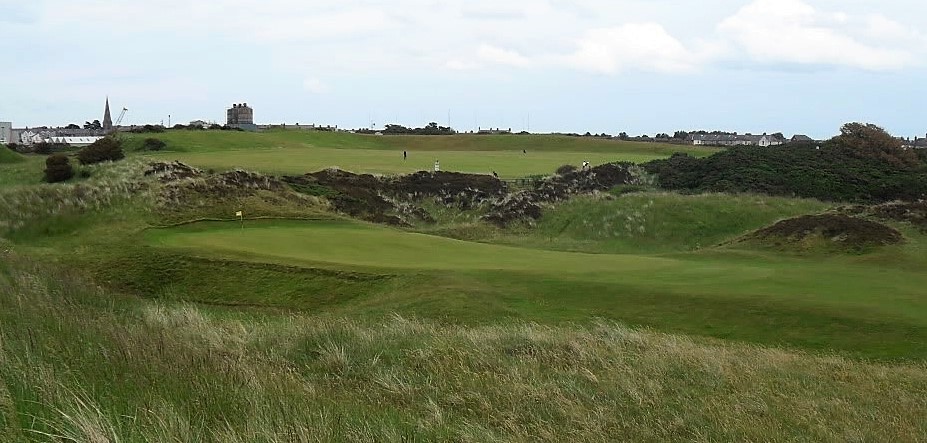
The three shot fifth is most interesting for its in search of the fairway drive. With the wind pushing off the left it is difficult to know the exact line.
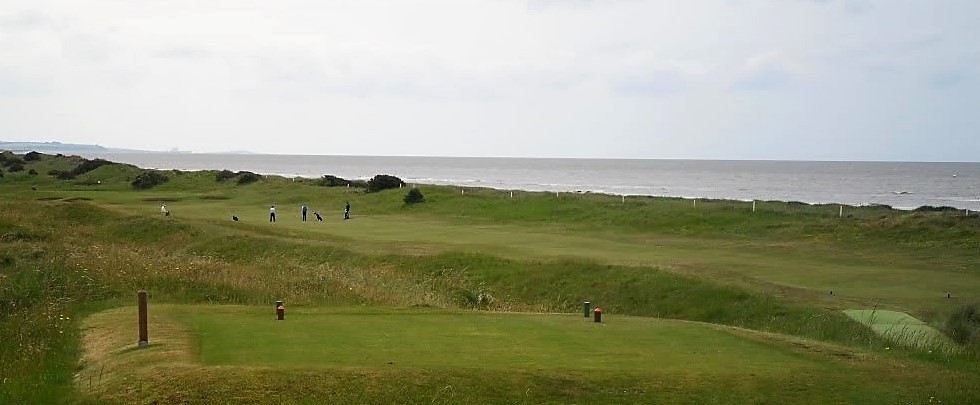
The approach plays longer than it looks as the green is slightly uphill with bunkers protecting the landing area. For most, the two right bunkers must be taken on to reach the green in two.

The first short hole at Silloth is for me the best. The ridge connecting between the two bunkers is very reminiscent of Raynor's design method at Yeamans Hall, even if the styling is different.
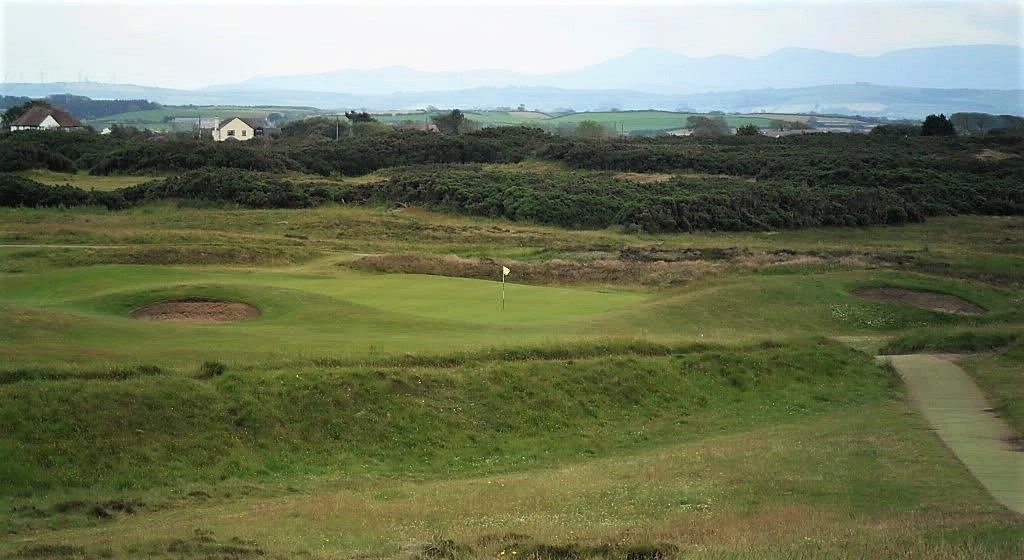
The 7th is a climber which takes a bit of local knowledge to figure out. Even though the hole is uphill and without a favourable wind it plays short. The green is located about 40 yards on the far side of a hill crest so the approach is really played to the top with the expectation that gravity will do the rest.

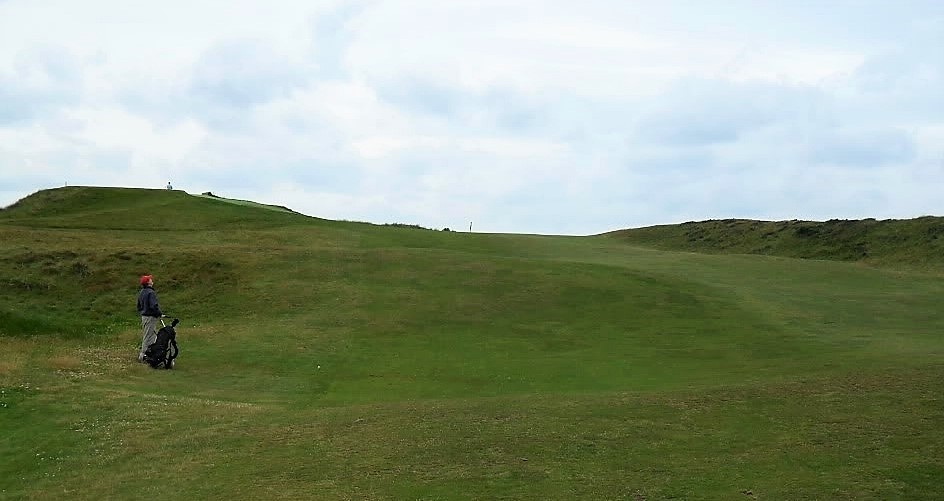
Play is from the right of the picture heading downhill toward the green.
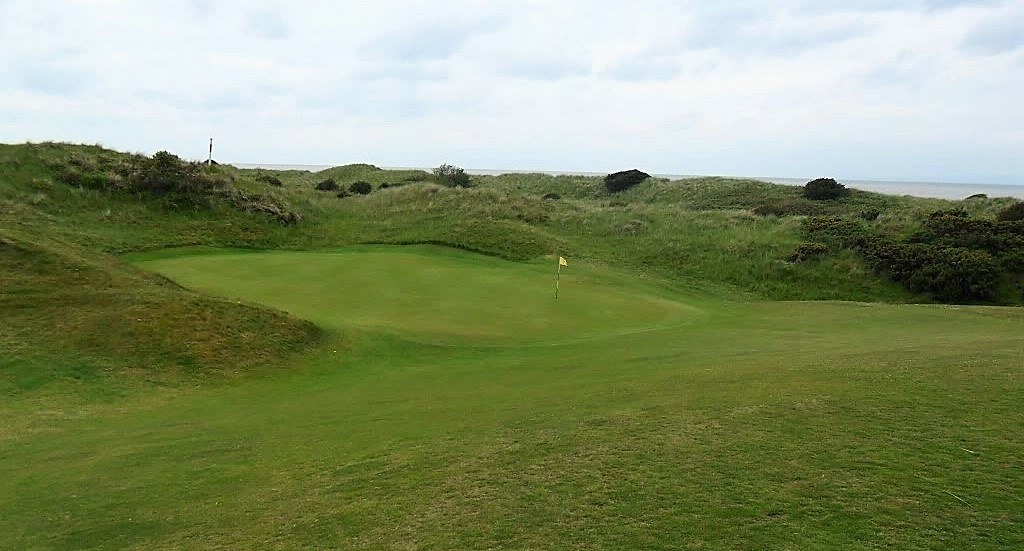
Often times it can be the case that while a hole isn't poor per se, it doesn't add much to the course; the 8th is a case in point. It is about this time that one twigs there have been perhaps one or two too many holes of this general driver/wedge or 9 iron or 8 iron length on the front nine. Like all of these holes (#s 1, 2, 3, 4, 7 and

, there is something to separate the identity of each hole and the 8th has a centreline bunker. I fear this may not be enough to make up for the lack of playing length diversity.
The finishing hole going out is a teaser par 3 with several bunkers guarding the front and wings.

The back nine is away from the sea and in the main plays back to the house. The run of 10 through 13 is a superb mix of thinking man's golf combined with the possibility of expertly contolled brute force winning the day. The 10th is the sort of hole that most will want to bang a driver over a heathery knoll to the left and see what gives. It is thought that Dr Mac chose this greesite. The hole is about 250 on this line, but OOB is hard right and there are corner bunkers to be dealt with. There is a very short layup option short of two crossing bunkers which I believe are fairly new, but this leaves an obscured approach with the OOB ever present.
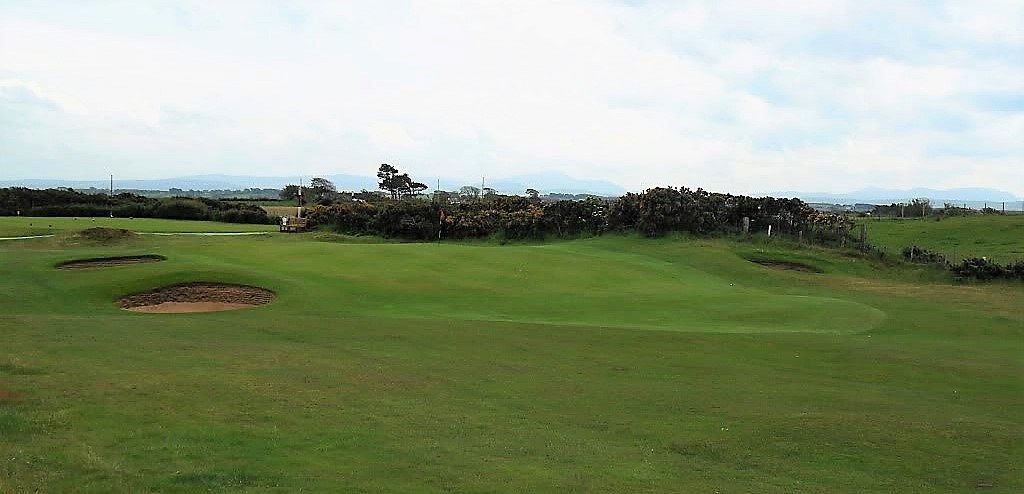
The obligatory, but in this case well out of the way caravan park, creates OOB down the right on the 11th. The hole turns hard right in a similar fashion to Wallasey's 8th and for the first time in the round requires something more than an 8 iron approach on a par 4.
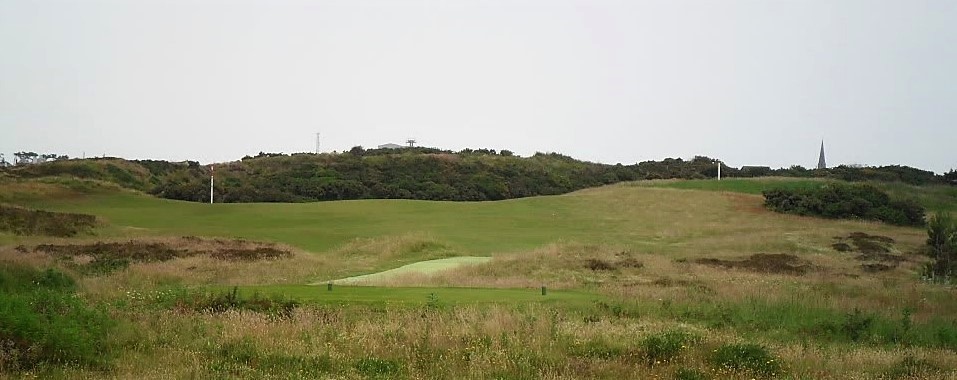
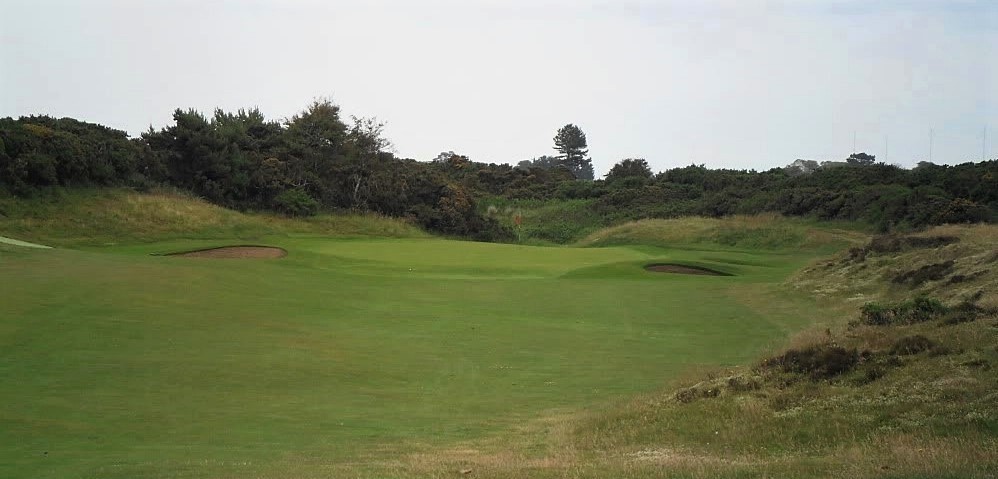
The long par three 12th is a fairly straight away hole, but a tough par nonetheless. The singular 13th is an incredible par 5 the likes of which I have never seen before. Hitting back into the wind, the hole is still reachable in two for fairly long hitters, but the margin of error is seemingly less than zero. I can imagine the playing of every shot on this hole being completely dependent on the wind direction.
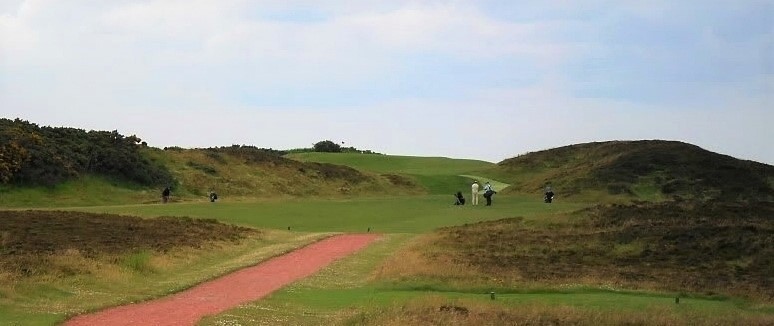
I knew this green site had no bail out area because its on view from both angles playing previous holes. I therefore decided the only prudent play was a 5 iron with the hope of getting out of Dodge with a five. The break in the fairway helps to create the idea of a do or die style second for anyone who doesn't hit a decent drive. The second-hand astro turf covering the paths is a blight on the course which probably saves on maintenance. Perhaps the club should consider going back to traditional paths on holes where they are prominently on view.

Even for the the short chip I dared not go at the hole!
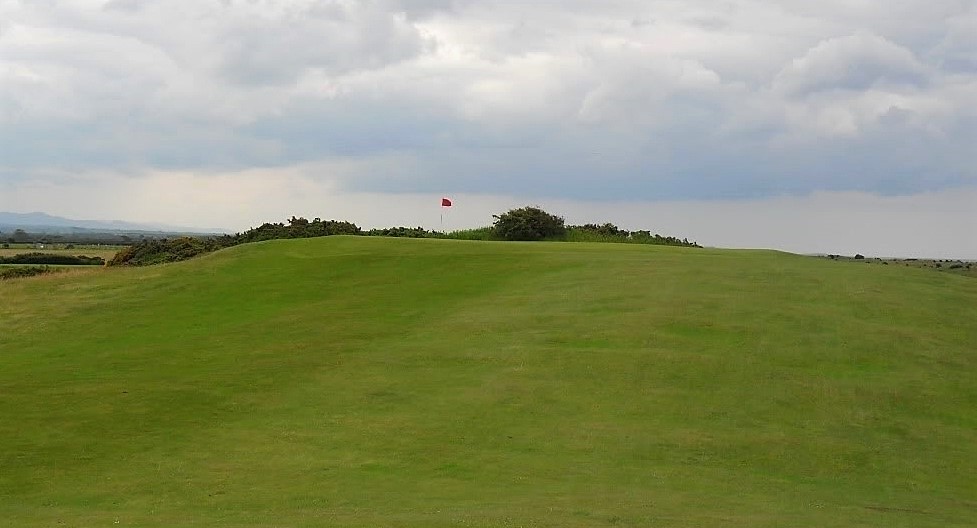
I can give a pass to the front nine having so many holes play the same yardage because of the variety of greensites, but for me the finishing stretch at Silloth is the Achilles Heel. None of the holes are remotely poor, but none have the pizzaz of the many holes dotted throughout the first 13. The 14th is an up n' over par 5 with a blind green. Just over the crest of the hill is a break in the fairway loaded with heather. The green sits in a low spot. #15 is a good length two-shotter that is hard to make out from the tee. The slightly obscured tee shot is an element of design I enjoy. The approach is also interesting as the bunker shoulder effects the bounce. The short 16th is perhaps the only hole I didn't think was up to scratch. The hole is too similar to the 12th, but a more severe version even though it is 20 yards shorter.
#17 offers a fine sight from the tee with a heaving fairway and its a bit of respite on the card. The green is very reachable in two and has a feeding downslope to the green. With a forward hole location this hole is a bit more demanding.
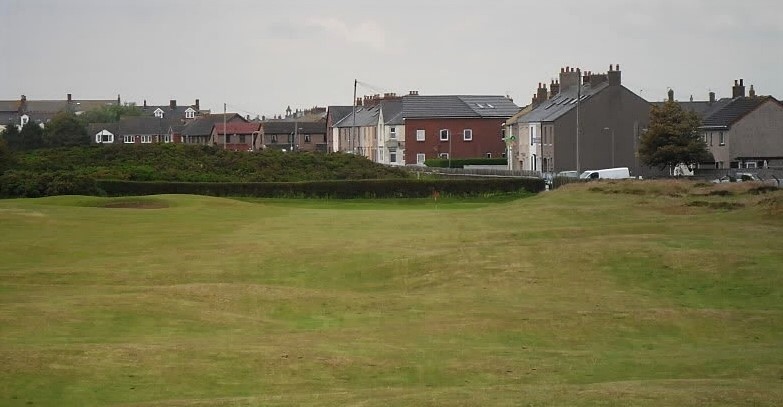
The Home hole isn't a bad finish. The fairway bunkers on the right are well placed and the approach distance is difficult to gauge as the green site is slightly below the fairway.
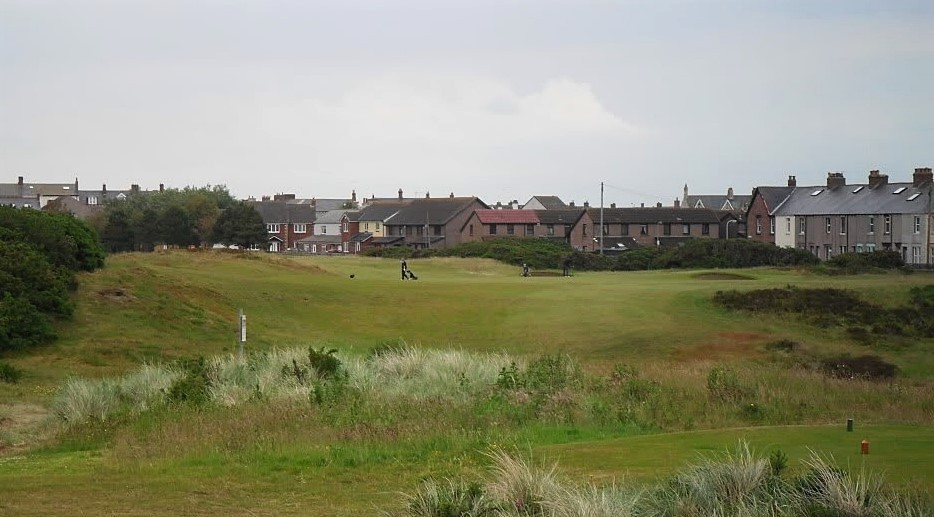
Despite the gloomy weather I was most impressed by Sillloth. There are enough very good holes with not an egg among them. Its easy to see why the course is highly rated and loved by so many visitors. At £45 this is most definitely my sort of golf and would happily return. 2011
Ran's Review.
http://golfclubatlas.com/courses-by-country/england/silloth1/Seascale
www.golfclubatlas.com/forum/index.php/topic,60048.msg1419562.html#msg1419562Windermere
https://www.golfclubatlas.com/forum/index.php/topic,66099.msg1577955.html#msg1577955Ciao